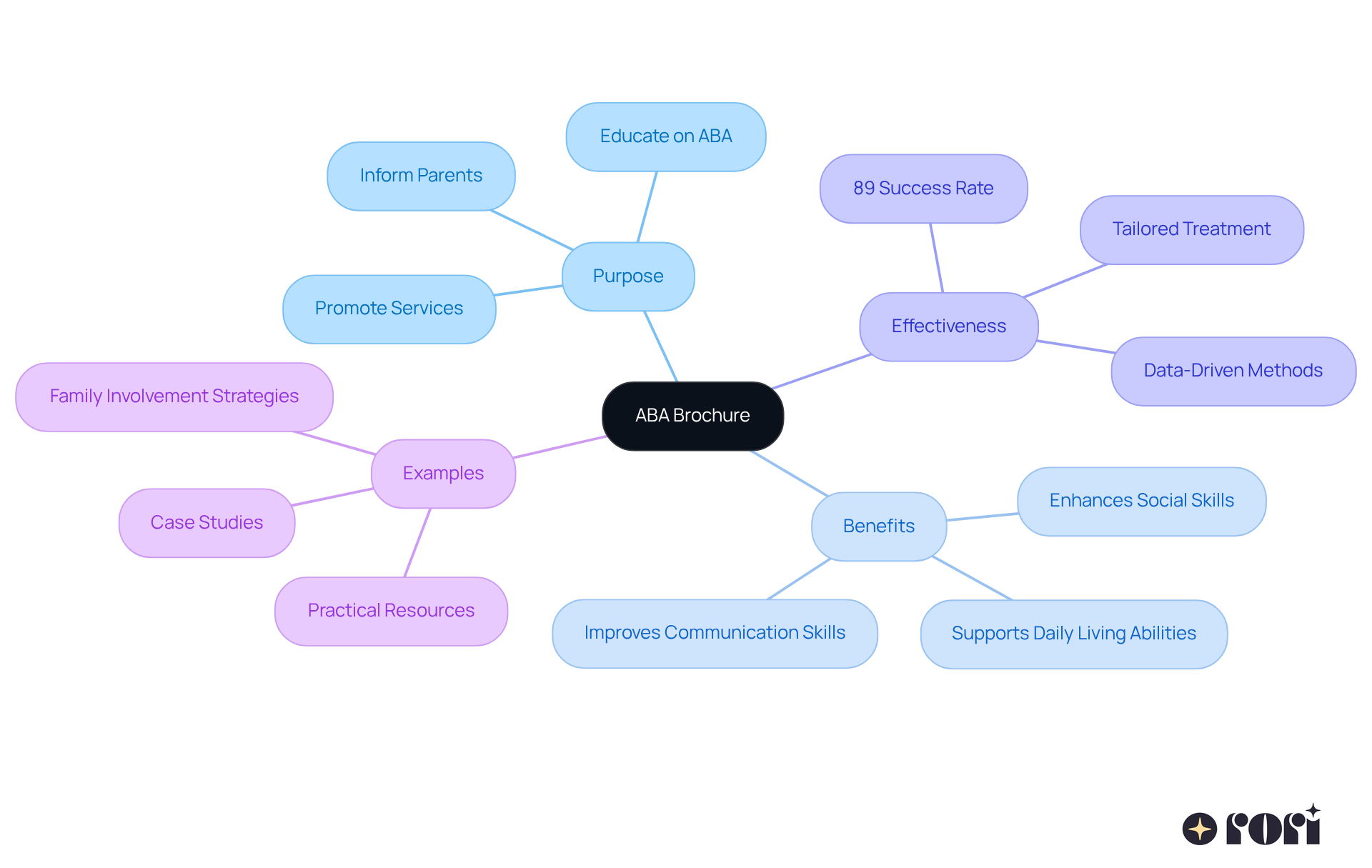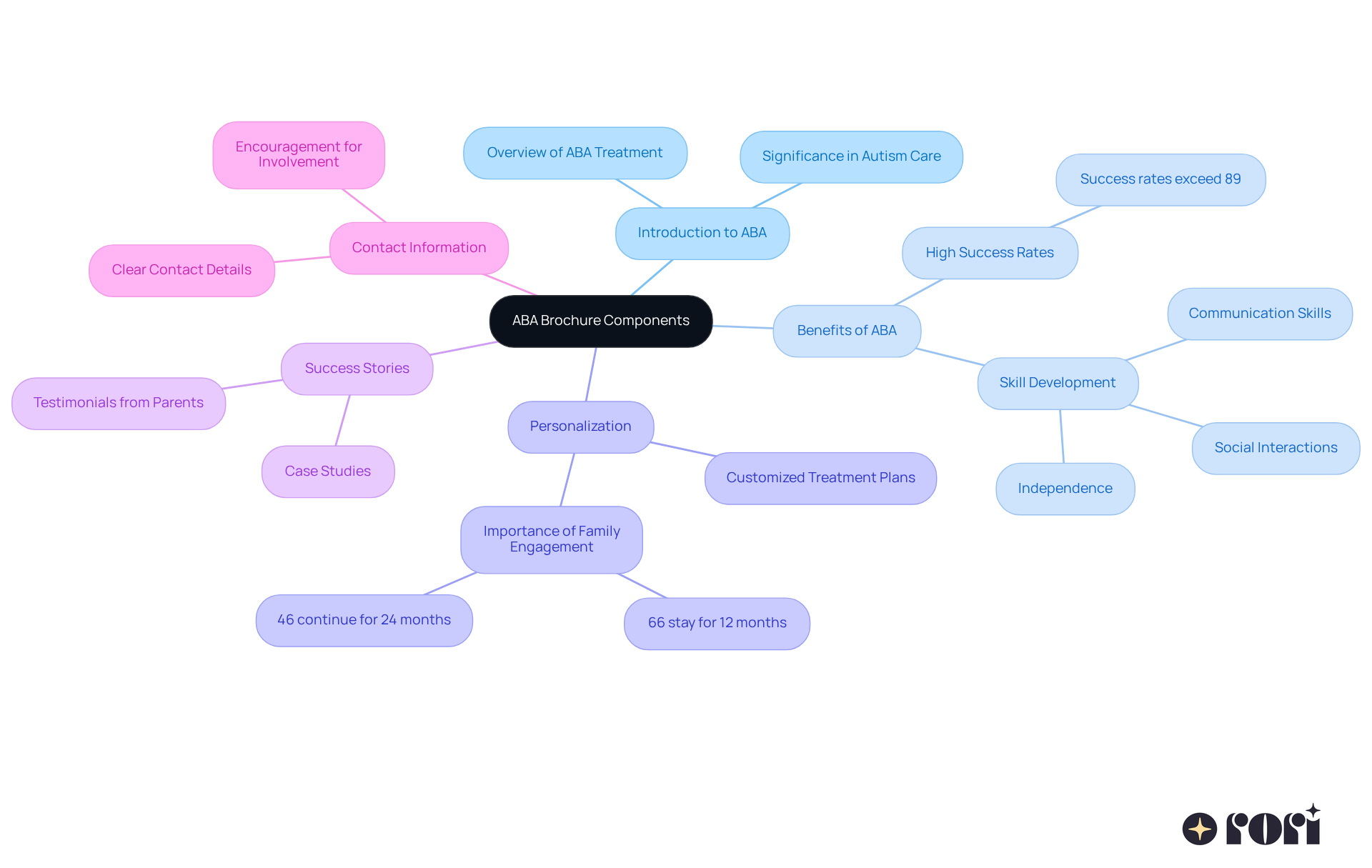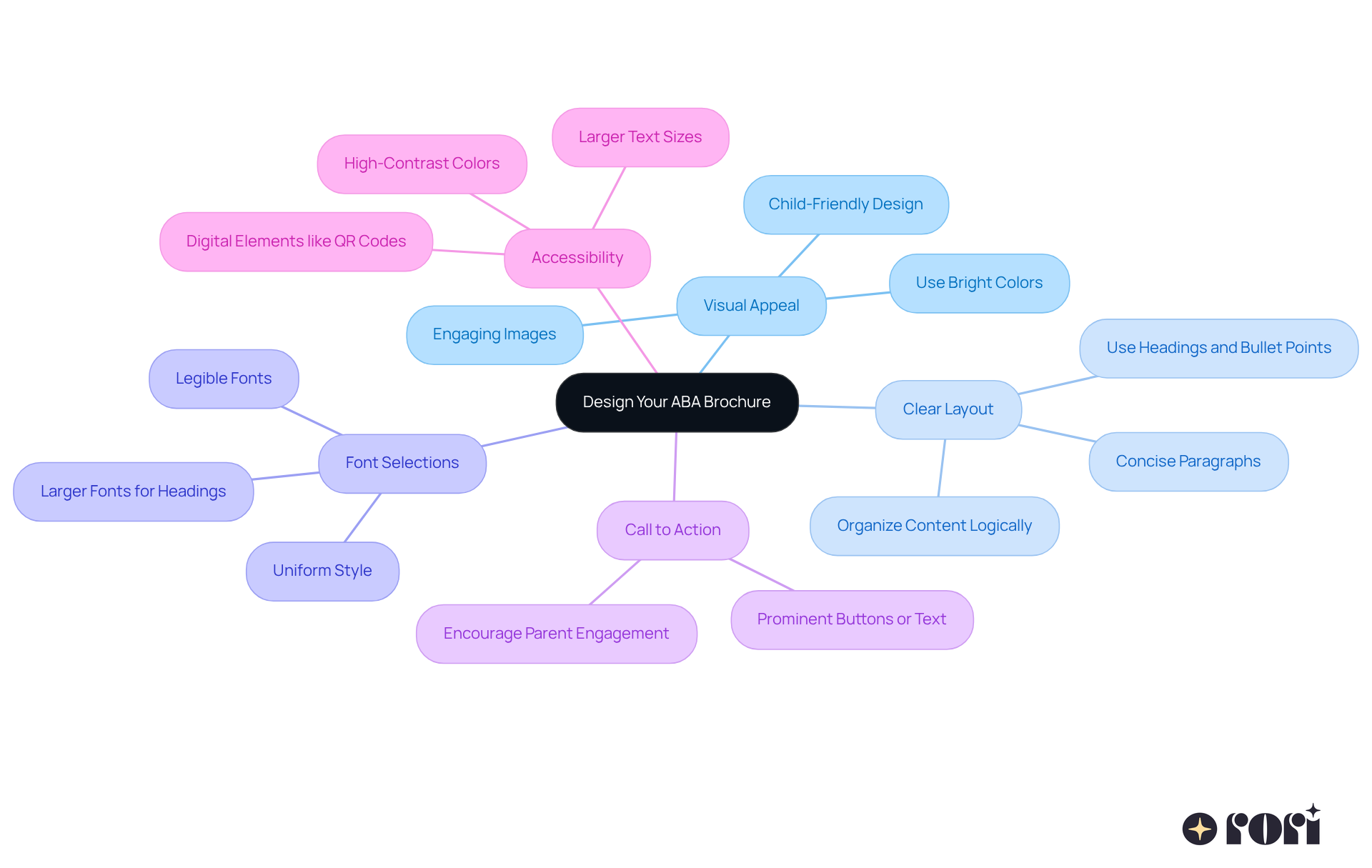This article focuses on creating an effective ABA brochure for parents, highlighting its essential components and design strategies. It introduces ABA in a friendly manner, emphasizing its benefits and personalizing treatment options. By sharing success stories and ensuring clear design and distribution methods, the article aims to educate parents and instill confidence in the effectiveness of ABA therapy for children with autism.
Let’s explore this together! The key elements include:
Sharing real-life success stories can really resonate with parents, helping them feel connected and understood.
Additionally, ensuring that the brochure has a clear design and effective distribution methods is crucial. This way, parents can easily access the information they need and feel empowered to seek help. We’re here to help you every step of the way!
Creating a brochure that effectively communicates the essentials of Applied Behavior Analysis (ABA) can truly be a game-changer for parents navigating autism treatment options. This guide offers a comprehensive look at how to craft an engaging and informative ABA brochure, ensuring that it not only educates but also empowers families to make informed decisions.
But with so much information to share, how can parents make sure their brochure stands out and resonates with those who need it most? Let’s explore this together!
An aba brochure is a vital resource for parents, effectively communicating important details about Applied Behavior Analysis (ABA) treatment. It should clearly outline the therapy's purpose, benefits, and its role in assisting youth with autism. So, what’s the primary goal of your brochure? Is it to inform, educate, or promote services? Understanding this will shape both your content and design choices.
Let’s dive into what ABA is! It’s crucial to explain its proven effectiveness—did you know it boasts a success rate exceeding 89%? Plus, it can be tailored to meet each individual’s unique needs. By emphasizing the transformative potential of ABA treatment, parents and caregivers can truly grasp its impact on their child's development.
For instance, studies suggest that children undergoing intensive ABA treatment often show remarkable advancements in communication and social skills. This makes it essential to convey these results effectively! By showcasing practical examples of effective resources in the ABA brochure, you can instill confidence in the benefits of the treatment and motivate families to utilize the resources available to them.
Let’s explore this together! We’re here to help you every step of the way!

When crafting your ABA brochure, it’s essential to include several key components to ensure it’s both informative and engaging:
Introduction to ABA: Start by offering a concise overview of Applied Behavior Analysis (ABA) treatment. It’s important to explain its significance in autism care and how it serves as a foundational approach for many young individuals.
Benefits of ABA: Let’s highlight the numerous positive outcomes associated with ABA therapy! Research shows that success rates often exceed 89%, with young individuals making strides in communication skills, social interactions, and independence. ABA helps young individuals acquire vital life skills, like using the restroom and dressing independently, promoting increased self-sufficiency. This effectiveness is backed by empirical research, reinforcing the credibility of ABA as a treatment option.
Personalization: Emphasize the importance of customizing ABA support to meet each individual’s unique needs. Personalized treatment plans are crucial, as they consider individual strengths, interests, and goals, leading to more effective interventions. At Rori Care, our behavior care engine updates behavior intervention and skill acquisition plans after each session based on progress made, ensuring that treatment plans evolve with the individual’s development. Did you know that 66% of youth referred for ABA treatment start services and stay involved for at least 12 months? In contrast, only 46% continue for 24 months. This highlights the importance of a tailored approach and the necessity for continuous family engagement in the treatment process, which is essential for achieving the best results. Rori Care is dedicated to neurodiversity and the success of young individuals, ensuring that each young person receives the support they need.
Success Stories: Incorporate testimonials and case studies that showcase the effectiveness of ABA practices in real-life situations. Sharing success stories from parents can significantly enhance the trustworthiness of your pamphlet, demonstrating how customized ABA interventions have positively influenced youngsters’ lives. For instance, youngsters who undergo early and intensive ABA intervention frequently show remarkable improvements in communication and social abilities, reinforcing the intervention’s effectiveness. Expert insights, like those from Ralph Moller, emphasize that a personalized treatment plan considers the unique needs and preferences of the individual, allowing for tailored interventions that are most effective for their specific challenges, aligning perfectly with Rori Care’s approach.
Contact Information: Don’t forget to include clear and accessible contact details! This allows parents to easily reach out for more information or to schedule consultations, promoting involvement and motivating families to take the next step in their child’s treatment journey.
By incorporating these elements, your ABA brochure will not only educate parents about the treatment but also instill confidence in its ability to change their child’s life. Let’s explore this together!

Designing your brochure for ABA to achieve maximum impact can be a fun and rewarding process! Here are some friendly tips to consider:
Visual Appeal: Bright colors and engaging images can really highlight the positive aspects of ABA therapy. Think about a child-friendly design that invites parents in—after all, 90% of parents say cultural awareness and inclusivity in educational materials are super important!
Clear Layout: Organizing your content logically is key! Use headings, bullet points, and concise paragraphs to keep things readable. A clean design helps too; research shows parents love straightforward messaging in an aba brochure that grabs their attention quickly.
Font Selections: Picking legible fonts is essential! Keep a uniform style throughout your brochure. Larger fonts for headings and smaller ones for body text can guide parents through the information easily.
Call to Action: Don’t forget a clear call to action! Encourage parents to reach out for more information or to schedule a consultation by referring to the aba brochure. A prominent button or highlighted text can make it super easy for them to take the next step.
Accessibility: It’s important to ensure your materials are accessible to everyone, including those with visual impairments. High-contrast colors and larger text sizes can enhance readability. Plus, with nearly 80% of parents agreeing that technology simplifies caregiving tasks, consider adding digital elements like QR codes for extra resources!
Let’s explore this together! We’re here to help you every step of the way!

To distribute your ABA brochure effectively, let’s explore some friendly strategies together:
Targeted Locations: Think about high-traffic spots where parents of children with autism might visit, like pediatric clinics, schools, and community centers. Placing your materials in waiting areas or on community boards can really boost visibility!
Networking: Collaborating with local autism support groups, therapists, and schools can be super helpful. These organizations can share your materials via the ABA brochure with families who might benefit from ABA therapy, enhancing community engagement and support.
Events and Workshops: Participating in community events, workshops, or seminars focused on autism is a great way to connect! Handing out your ABA brochure during these gatherings allows for direct interaction, fostering connections and increasing the likelihood of engagement.
Digital Distribution: Why not create a digital version of your pamphlet? Sharing the ABA brochure via email or social media expands your reach and gives parents easy access to important details about ABA support.
Follow-Up: After you’ve distributed the brochures, don’t hesitate to follow up with your contacts! Checking in to see if they have any questions can lead to meaningful connections and potential clients, reinforcing the importance of your outreach efforts.
By implementing these strategies, you can effectively raise awareness about the ABA brochure and connect with families who need support. We’re here to help you every step of the way!

Creating an effective ABA brochure is an essential step for parents seeking to understand and utilize Applied Behavior Analysis (ABA) therapy for their children. This guide has highlighted how a well-crafted brochure not only informs but also empowers families by showcasing the transformative potential of ABA. By clearly articulating the purpose, benefits, and personalization of ABA, parents can gain the confidence needed to pursue this beneficial treatment for their children.
Key components of an ABA brochure include:
Each element plays a crucial role in enhancing the brochure's effectiveness, ensuring it resonates with parents and addresses their concerns. Thoughtful design choices—like visual appeal, clear layout, and accessibility—can significantly impact how the information is received and understood.
Ultimately, the significance of an ABA brochure goes beyond mere information sharing; it serves as a pivotal resource that connects families to vital support systems. By implementing effective distribution strategies, such as targeting community locations and leveraging digital platforms, the reach of the brochure can be maximized. This not only raises awareness but also fosters a supportive community for families navigating the challenges of autism. Embracing these practices can lead to a more informed and engaged parent population, ultimately enhancing the lives of children benefiting from ABA therapy. Let’s explore this together!
What is the purpose of an ABA brochure?
The purpose of an ABA brochure is to effectively communicate important details about Applied Behavior Analysis (ABA) treatment to parents, outlining the therapy's purpose, benefits, and its role in assisting youth with autism.
What should be considered when creating an ABA brochure?
When creating an ABA brochure, it is important to understand whether the primary goal is to inform, educate, or promote services, as this will shape both the content and design choices.
What is ABA and what is its effectiveness?
ABA, or Applied Behavior Analysis, is a treatment that has a proven effectiveness rate exceeding 89%. It can be tailored to meet each individual’s unique needs.
How can ABA treatment benefit children?
Children undergoing intensive ABA treatment often show remarkable advancements in communication and social skills, which can significantly impact their development.
How can practical examples be used in an ABA brochure?
Showcasing practical examples of effective resources in the ABA brochure can instill confidence in the benefits of the treatment and motivate families to utilize available resources.